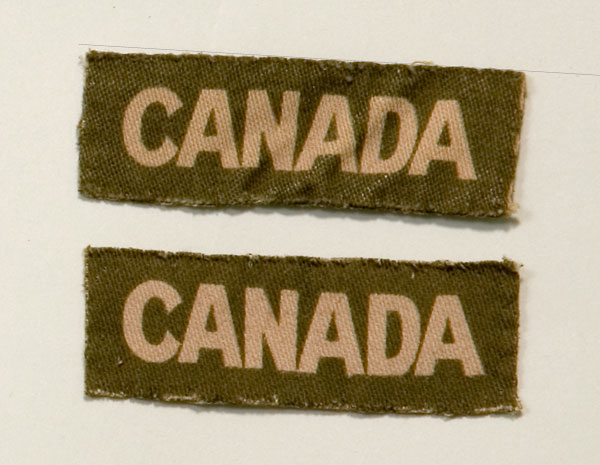 |
|

|
|
|
During the June 6, 1944, D-Day invasion the 3rd Canadian Infantry Division landed at Juno Beach. The Allies there had to contend with submerged beach obstacles as well as heavy gunfire that came from seafront houses converted into enemy fortifications. The 3rd Division’s 8th Infantry Brigade, commanded by Brigadier General Kenneth G. Blackader, which included the Queen’s Own Rifles of Canada Regiment in the first wave, suffered heavy losses. They had inadvertently arrived ahead of the supporting armor. Supported by specially equipped tanks designed by the British Major General Percy Hobart, the Canadians were able to secure their beachhead. By nightfall Canadian troops had finally made the deepest penetration into occupied France. The “Canada” shoulder flash insignias, worn proudly on their jackets, were one of the few items that distinguished their uniforms from those of the British. Shortly after D-Day about 100 unarmed Canadian and British soldiers who had been captured in Normandy were massacred in several separate incidents by members of the infamous 12th SS Hitlerjugend Panzergrenadier Division. The best known of these atrocities happened on June 7 and 8, 1944, at the Abbey Ardennes outside the city of Caen, and involved the deaths of dozens of Canadians. It is a tragic fact that in World War II there were a number of POW massacres committed by both sides. Often these were perpetrated as retaliation for losses of comrades in battle. However, the Waffen SS has the greatest stigma as having had a hand in most of these war crimes. Canadians in Montgomery’s 21st Army Group became the First Canadian Army and were commanded by Lieutenant General Henry D.G. Crerar. Crerar’s Army included the 2nd and 3rd Canadian Infantry Divisions, 4th and 5th Canadian Armored Divisions, 49th British Infantry Division, and the Polish Armored Division. The First Canadian Army liberated much of northern France and Belgium. |
|